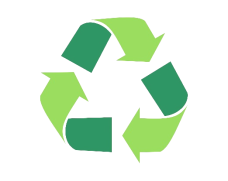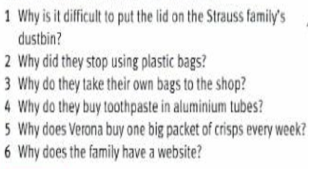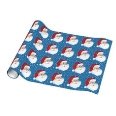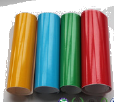Умовні речення 2 типу. Переробка відходів.
Урок 3. Умовні речення 2 типу. Переробка відходів.
Тип уроку: урок комплексного застосування знань, умінь і навичок.
Мета уроку:
освітня: навчити обговорювати проблеми навколишнього середовища, переробки сміття, використовуючи попередньо отримані граматичні та лексичні знання;
навчальна: практикувати вживання лесики за темою, удосконалювати навички аудіювання, читання, говоріння, письма;
розвиваюча: творче мислення, розвивати мовні здібності, здібності логічно висловлюватись; використовувати інформаційні технології для вивчення англійської мови;
виховна: формувати зацікавленість у вивченні англійської мови, працьовитість, виховувати уважність.
Учні повинні:
знати: які способи переробки сміття існують;
вміти: сприймати на слух інформацію, щодо переробки, усно і письмово висловлювати свої ідеї з цього приводу, використовувати умовні речення другого типу.
Обладнання: комп’ютер з інтернет з’єднанням, телевізор, підручник “Solutions Pre-intermediate”, second Ukrainian edition, картки з завданням, смартфон/планшет.
Хід уроку.
- Привітання. Розмова з учнями. (2 хвилини)
T: Good morning students. How are you today?
Ss: We are fine. Thank you. And how are you doing?
T: Oh, I am fine too. Thanks for asking.
- Перевірка домашнього завдання, відтворення і корекція опорних знань, навичок і вмінь. (15 хвилин)
- Учитель пропонує учням обрати найцікавіше речення, щодо того, як би він/вона повелись в різних ситуаціях і зачитати класу. Коли всі прочитають, обирається переможець – той, чиє речення було найоригінальнішим.
T: If you remember, last time we discussed 2d conditional sentences. And at home you were supposed to write how you would behave yourself in some situations. I really want to know your answers. Before you hand in your notebooks, I want each of you to read out one sentence you consider the most creative and unusual. When everyone has read his or her sentences, we will vote for the best one.
Ss read out the sentences and the class decide which one is the most interesting.
- Учитель пропонує учням позмагатись і вирішити, хто з них краще засвоїв граматику щодо умовних речень другого типу. Для цього використовується попередньо підготовлений на платформі kahoot тест.
T: I hope you remember that we discussed some grammar rules and you know that 2d conditional sentences have special formation formula. To see how good you are at this grammar issue, I offer you to play kahoot. You already know the procedure. So prepare your devices and let the battle begin!
Вчитель завчасно відкриває сторінку сайту (https://play.kahoot.it/#/lobby?quizId=bb0a31ac-72cb-4680-92d2-b8b3a6f6886b).

Щоб приєднатися до гри учні відкривають сайт kahoot.it на смартфонах чи планшетах, які мають підключення до інтернету, і вводять код гри (в нашому випадку 585687).
Коли всі приєдналися вчитель запускає гру. На моніторі комп’ютера з’являється запитання,

а потім варіанти відповіді. На своєму пристрої учні натискають на колір відповідний вірному варіанту відповіді.

Коли всі зробили вибір, комп’ютер показує результати: кількість і якість відповідей. А також обов’язково правильний варіант відповіді.

Після чого висвічується «дошка результатів», на якій учні бачать, хто з них виграє.

Наприкінці висвічуються остаточні результати, а вчитель може завантажити файл з детальним аналізом помилок.

- Мотивація навчальної діяльності, усвідомлення учнями практичної значущості знань, умінь та навичок. (3 хвилини)
- Вчитель пише на дошці слово “rubbish” сміття і пропонує учням в парах скласти список речей, які вони зазвичай викидають у сміття. За хвилину пари читають свої списки. В кого вийшов найдовший?
T: Look at the board. You see the word “rubbish”. I am sure all of you know its meaning. Every day you throw away a lot of things. I want you to work with a partner for 1 minute and make a list of what you throw away. Let’s see who will have the longest list.
- Осмислення змісту і послідовності застосування практичних дій. (10–12 хвилин)
- Учитель пропонує учням подивитись на фото на екрані комп’ютера та відповісти на запитання: чому сім’я на фото пишається своїм відром для сміття.
|
|
T: Thanks for good job. You have probably seen the photo on the screen. It shows us a family, who is proud of their dustbin. Can you guess why it is so? Ss produce their answers.
|
- Вчитель пропонує учням швидко прочитати текст на картках та перевірити, чи вірні в них були здогадки.
T: Now read the text quickly and see whether your ideas were correct. You do not need to translate every word.
(Учні швидко читають текст. Перекладати його не треба на цьому етапі.)
|
Правильна відповідь: |
|
- Учням пропонується прочитати текст вдруге. Після чого вони відповідають на запитання до тексту. (Запитання можна роздрукувати на картки, а можна вивести на екран комп’ютера, якщо є така можливість). Перевірка у відкритих парах: учень читає питання і обирає сам іншого учня, який відповідатиме на це запитання.
T: Now I will ask you to read the text for the second time, after which you will have to answer my questions. One student will choose a question and ask it to another student, who will have to reply it.
|
Запитання: |
Відповіді: |
|
|
|
- Робота з новими словами. Учням пропонується доповнити фрази з тексту поданими дієсловами. Спочатку учні виконують завдання індивідуально, а потім перевіряють в групі.
T: OK. In the text you have come across some new vocabulary. So let’s have a short practice. Here is the list of the phrases from the text. You have to complete it with the verbs below.
|
cause, eat, harm, make, make, recycle, reduce, reuse.
|
|
|
|
|
|
|
|
Answers:
|
|
- Учням, які мають високі досягнення у вивченні англійської мови, пропонується, використовуючи вирази з попередньої вправи, написати коротке повідомлення (5-7 речень) про те, чому переробка відходів – це хороша ідея, що можна зробити. За бажанням учні читають свої повідомлення. Решта віддає вчителю на перевірку.
Решта класу письмово складає речення з виразами з попередньої вправи.
T: As for me, I think you agree that recycling is a good thing to do. So now, write a short paragraph (5-7 sentences) about why recycling is a good idea and what can be done. Use phrases from the previous exercise where possible.
- Самостійне виконання учнями завдання під контролем і з допомогою вчителя. (10-12 хвилин)
Учням пропонується переглянути відео “How to recycle in the New York City” (Як переробляють сміття в Нью Йорку) https://www.youtube.com/watch?v=KiuwzegZG-E і виконати завдання.
T: Now you are going to watch a short video called “How to recycle in the New York City”. Please, be attentive because after watching it you will have to complete the sentences with the necessary information.
Task 1. Watch the video for the first time.
Complete the missing stages of recycling. You don’t need to provide the exact wording.
1) Separate out paper items you can recycle…
2) … beverage cartoons, glass and plastic bottles and jars and metal objects
3) Go online or make a call in order to …
4) … Double-bag and throw away …
5) To dispose of appliances that contain CFCs, make an appointment at the government official site.
6) Go to the site for …
(Завдання перевіряється в групі. Учні по черзі зачитують етапи переробки сміття)
Task 2. Watch the video for the second time. Cross out the things you don’t include in your recycling, but rather throw away.
|
Glossy paper
|
Napkins
|
Smooth cardboard
|
Phone books |
Plastic-coated paper |
|
Plastic bottles |
Yogurt containers |
Plastic jugs
|
Foil |
Mirrors |
|
Light bulbs |
Laptop |
Rechargeable batteries |
Plastic grocery bags |
Alkaline batteries
|
- Підбиття підсумків уроку і повідомлення домашнього завдання. (3 хвилини)
T: Today we have discussed the recycling issue. You have read the text about a real family who recycle their rubbish. If you want to learn more, visit their site http://myzerowaste.com/. You may also need it while doing your homework.
- I will ask you to write your answers to the following questions:
- What sort of things do you recycle at home?
- How can people reuse or repair things instead of replacing them?
- Is there anything you can do to help the environment?
- Secondly, you will have to read some extra material for the topic, which we are going to discuss at the next lesson: How to protect the environment.
ДОДАТКИ.
- Текст для читання.
PROUD OF THEIR DUSTBIN!
The dustbin is full to the top with crisp packets and colored plastic. In tact, it's so full that it's difficult to put the lid on. But the Strauss family who own this dirty, old dustbin full of rubbish, are very proud of it. Why? Because it contains all the family's rubbish for a whole year!
Two years ago, Richand and Rachelle Strauss and their daughter Verona read an article about plastic bags and how they cause pollution and harm sea creatures. They decided to stop using plastic bags completely. Now, when they buy food, they reuse their own bags each time. They recycle as much as they can - glass bottles, plastic bottles, paper, cardboard, cans - and they simply don't buy things if they can't recycle the packaging. (They buy their toothpaste in aluminium tubes just because aluminium can be recycled.) And they never throw food away - they eat their leftovers or use them to make compost.
Al the moment, it's impossible to recycle plastic crisp packets, and sweet wrappers - and Verona loves crisps. If she bought a packet of crisps a day she’d have to throw away lots of plastic. So she buys the biggest packets she can find - and each packet lasts for a week!
The family are keeping a record of their lifestyle on their website. They hops that other people will read it and reduce their waste. If everyone recycled a bit more, it would make a huge difference.
- Запитання до тексту.

- Фрази з тексту для роботи над новим вокабуляром.
|
cause, eat, harm, make, make, recycle, reduce, reuse.
|
|
|
|
|
|
|
- Завдання для роботи з відео.
Копія для учнів:


1. Watch the video for the first time. Complete the missing stages of recycling. You don’t need to provide the exact wording.
1) Separate out paper items you can recycle
2) ___________________________ beverage cartoons, glass and plastic bottles and jars and metal objects
3) Go online or make a call in order to________________________________
__________________________________________________________________
4) __________________________________ Double-bag and throw away __________________________________________________________________
 5) To dispose of appliances that contain CFCs, make an appointment at the government official site.
5) To dispose of appliances that contain CFCs, make an appointment at the government official site.
6) Go to the site for___________________________________________
_______________________________________________________________
Remember! With a little effort you help make the Big Apple – the Green Apple!
2. Watch the video for the second time. Cross out the things you don’t include in your recycling, but rather throw away.
|
Glossy paper
|
Napkins
|
Smooth cardboard
|
Phone books |
Plastic-coated paper |
|
Plastic bottles |
Yogurt containers |
Plastic jugs
|
Foil |
Mirrors |
|
Light bulbs |
Laptop |
Rechargeable batteries |
Plastic grocery bags |
Alkaline batteries
|

Копія для вчителя:
1.
1) Separate out paper items you can recycle
2) Empty and rinse beverage cartoons, glass and plastic bottles and jars and metal objects
3) Go online or make a call in order to find out your assigned recycling date and obtain recycling decals*
*a design prepared on special paper for durable transfer on to another surface such as glass or porcelain
4) Keep certain items out of your recycling. Double-bag and throw away light bulbs and alkaline batteries. Bring rechargeable batteries to a store that sells rechargeable batteries and return plastic grocery bags to a local supermarket.
5) To dispose of appliances that contain CFCs, make an appointment at the government official site.
6) Go to the site for more information on recycling and to learn about other New York City initiatives designed to reduce waste.
Remember! With a little effort you help make the Big Apple – the Green Apple!
2. Watch the video for the second time. Cross out the things you don’t include in your recycling, but you rather throw away.
|
Glossy paper
|
Napkins
|
Smooth cardboard
|
Phone books |
Plastic-coated paper |
|
Plastic bottles |
Yogurt containers |
Plastic jugs
|
Foil |
Mirrors |
|
Light bulbs |
Laptop |
Rechargeable batteries |
Plastic grocery bags |
Alkaline batteries
|
- Завдання для опрацювання вдома.
- Питання, на які учні мають відповісти:
- What sort of things do you recycle at home?
- How can people reuse or repair things instead of replacing them?
- Is there anything else you can do to help the environment?
- Task 1. Read and translate the sentences in the table.
A lot of people feel that pollution has become one of the biggest problems in the world today. People do a lot of things to harm the environment. But still, people can do a lot to become friendly to the environment.
|
PROBLEMS: |
SOLUTIONS: |
|
Pure drinking water has already become a problem in many parts of the world. |
- We can save water. For example, we can save water from our baths and use it for the garden. This would help to save many litres of water every day, especially in summer. - We can stop losing water because of leaking pipes. Many cities have successfully saved water by repairing pipes. |
|
We pollute the water and the ground with toxic waste that comes from factories and with acid rain, which kills trees, fish and animals. |
- Governments can help by passing laws to stop factories from wasting and polluting water. Factories should recycle water and stop pouring chemicals into our lakes and rivers. - We can say ”No” to plastic bags in shops, and take our own shopping bags. |
|
We pollute the air with cars and factories: gas fumes come from cars and smoke comes from factory chimneys. |
- We could use our cars less and walk, cycle or use public transport more, whenever we can, - We can also use the sort of petrol which keeps the air cleaner, that is the unleaded petrol - Factories could clean their smoke. |
|
We poison the environment, using chemicals to spray fields and gardens to kill insects and weeds, or using detergents. |
We should only buy washing-up liquid and washing powder that do not harm the environment. |
|
The main reason for pollution is waste – that is things, which we use at home and then throw away. |
- We should throw things away but collect different kinds of waste: bottles, cans, paper, rags, and take them to places where they can be recycled. - We can reduce waste by re-using things, for example, we can write notes on the backs of old papers, letters, cards, etc., GIVE THINGS AWAY – DON’T THROW THEM AWAY! - DON’T WASTE food, water, energy, materials. Use everything sensibly and carefully. |
|
Forests are part of our environment. By cutting down trees, we harm the environment. When the forest is destroyed, it is not only the trees that are lost, the homes of millions of animals and plants are destroyed too. Many kinds of species are in danger. |
We can help by re-using paper when it is possible. Buy only recycled paper products, that is, buy products with the “Recycled” sign on it. They are a bit more expensive and not as white, but you help your planet by doing this. Encourage other people to buy only recycled paper! Have you ever planted a tree? Educate other people about the danger of forest fires. |


про публікацію авторської розробки
Додати розробку













